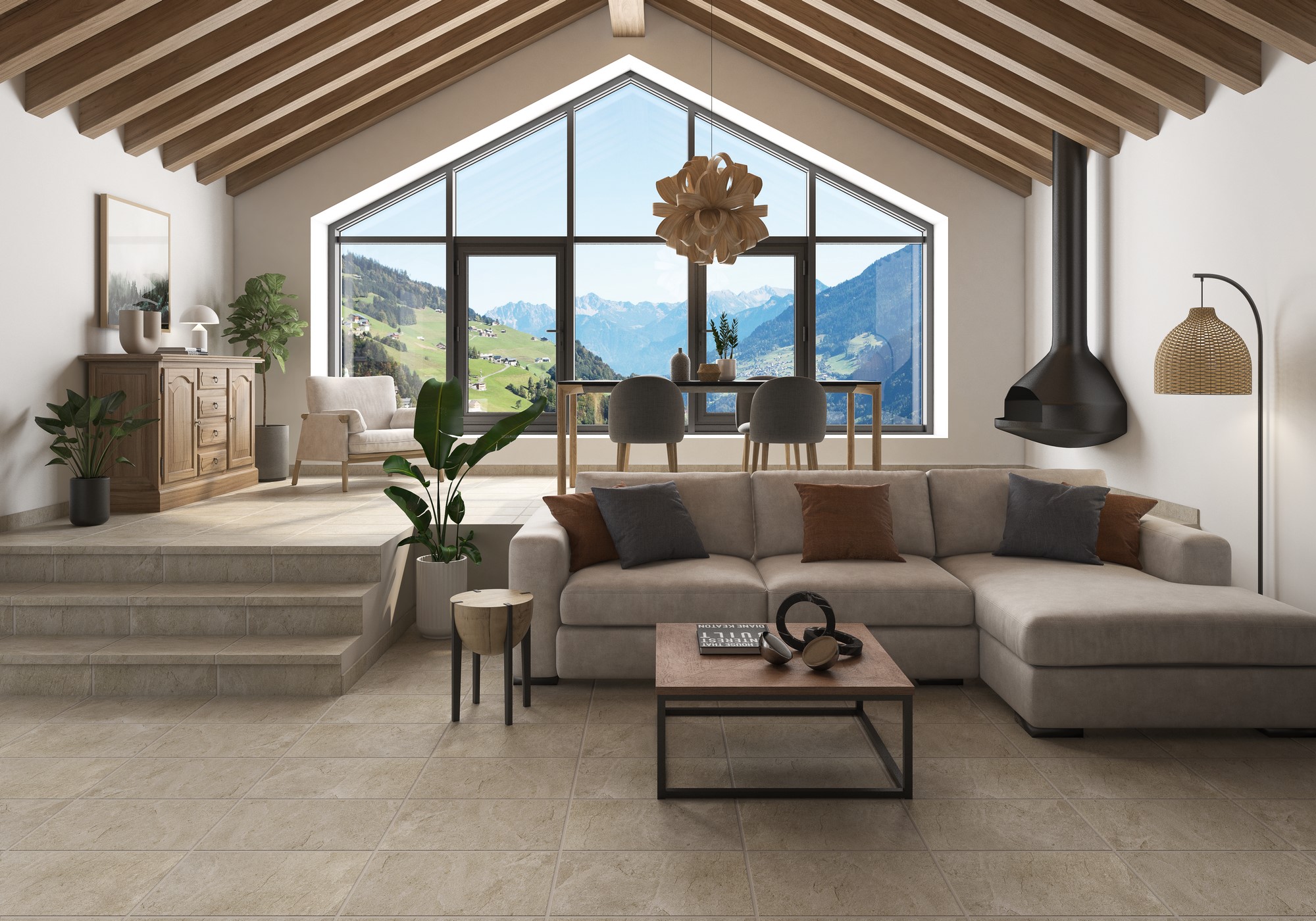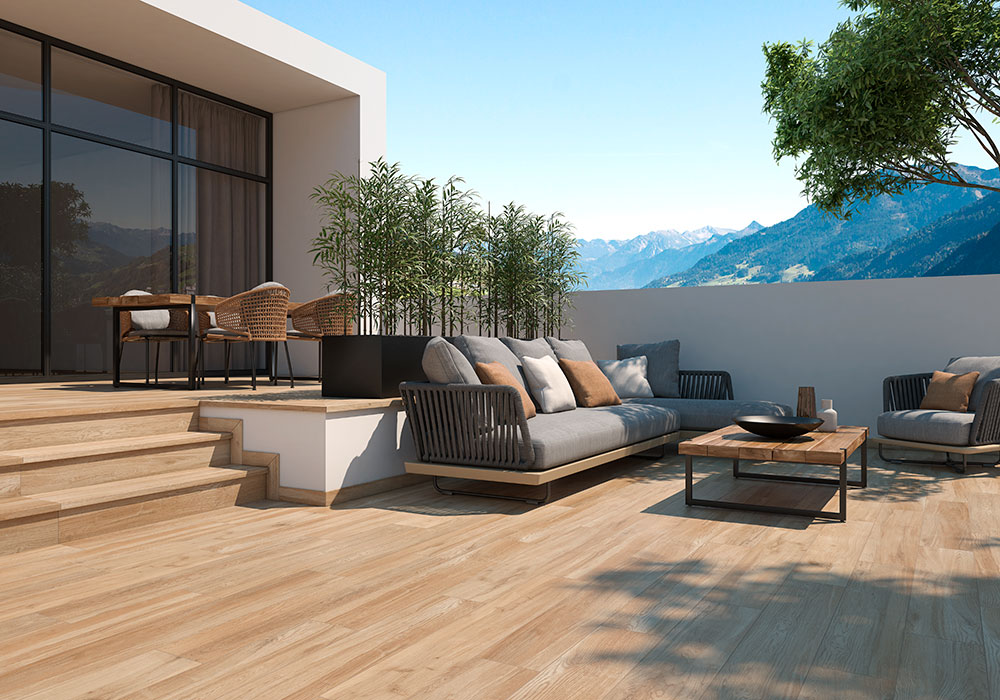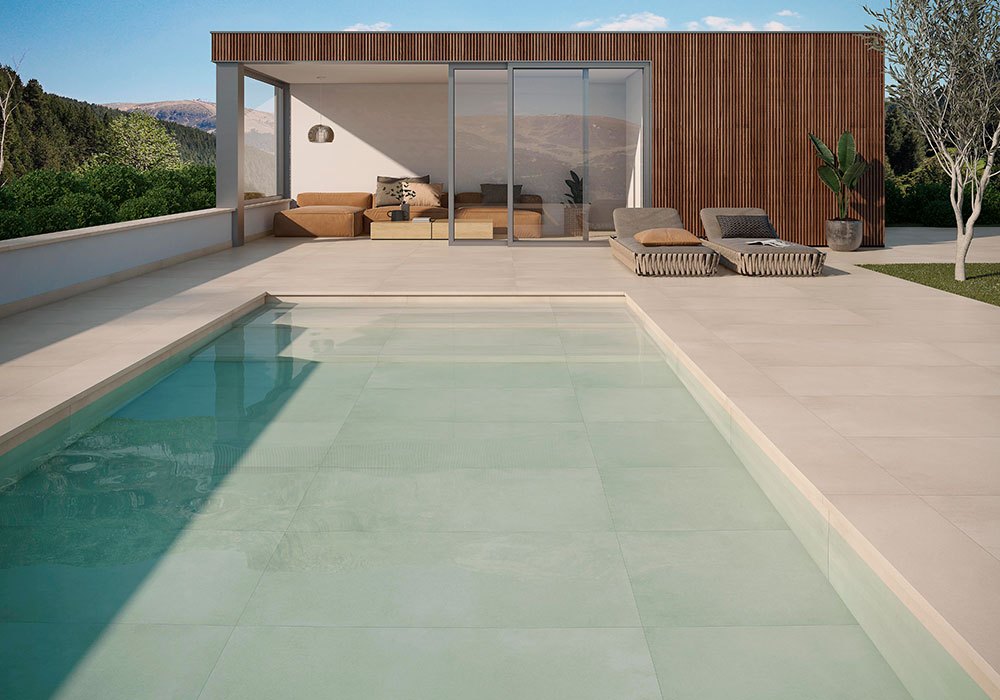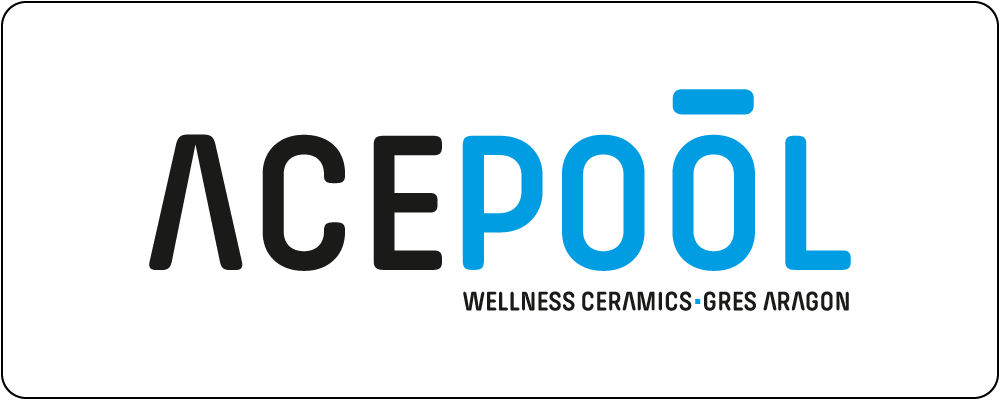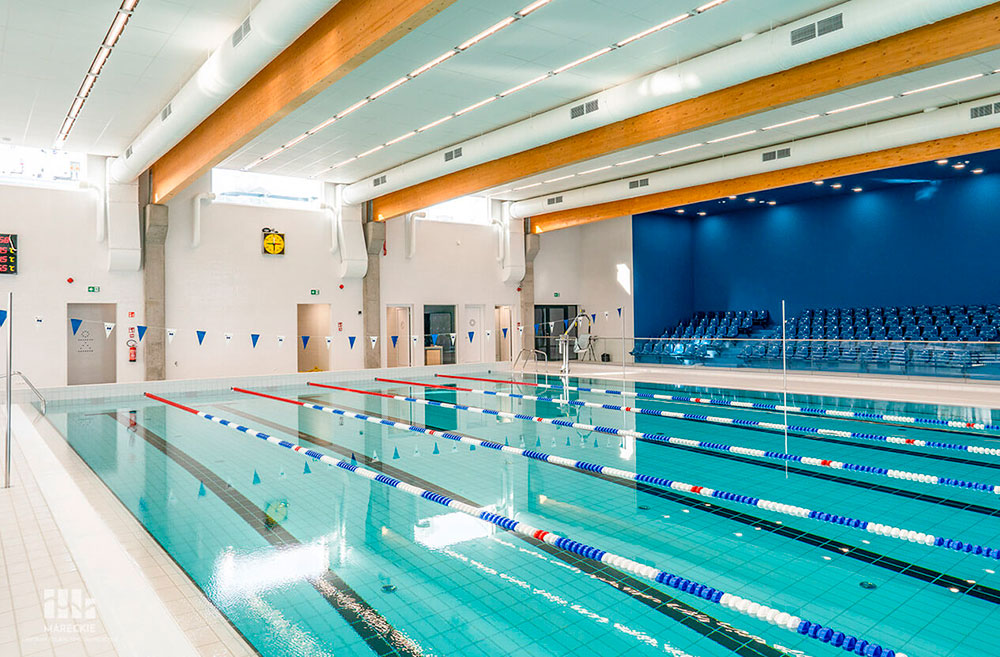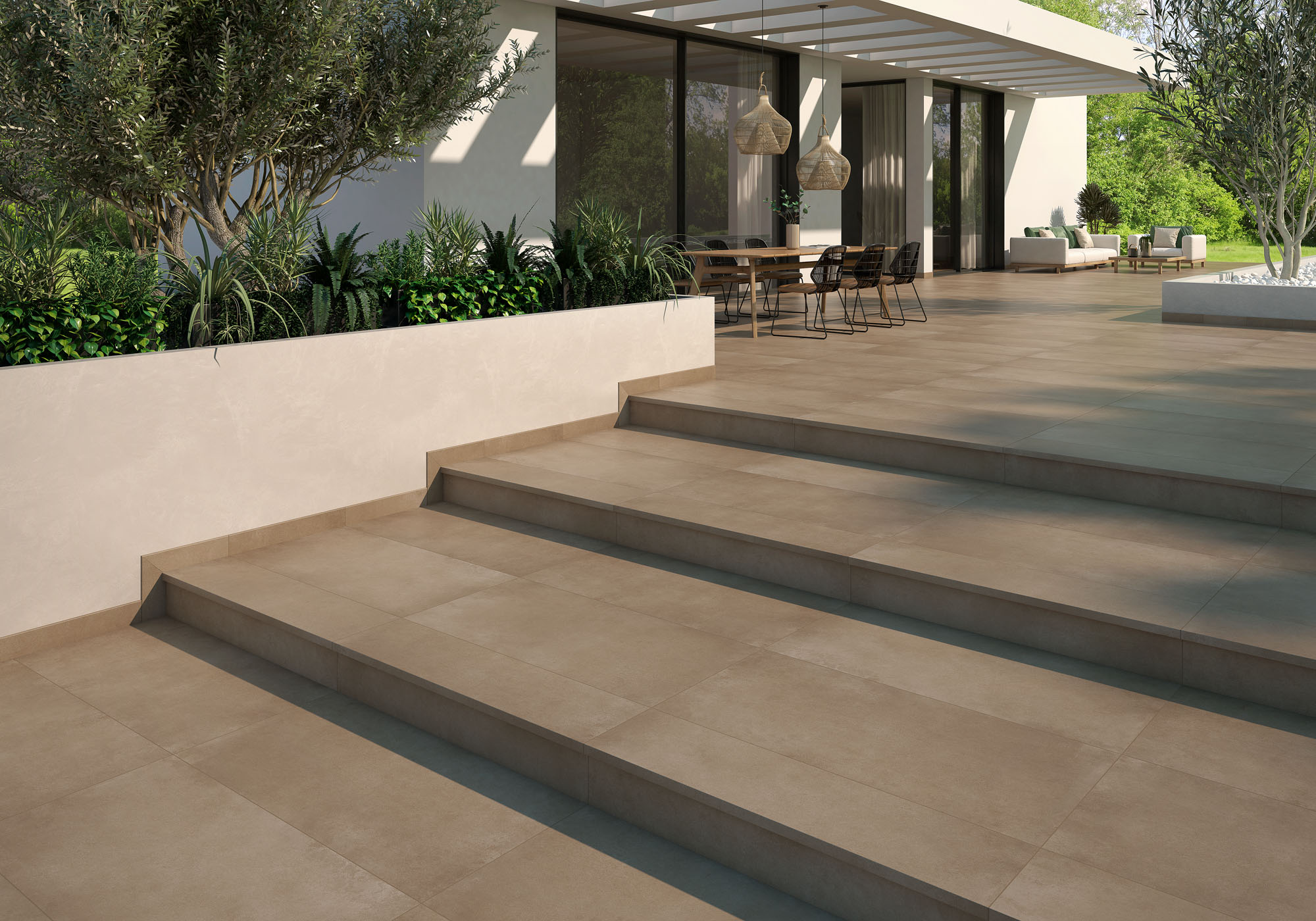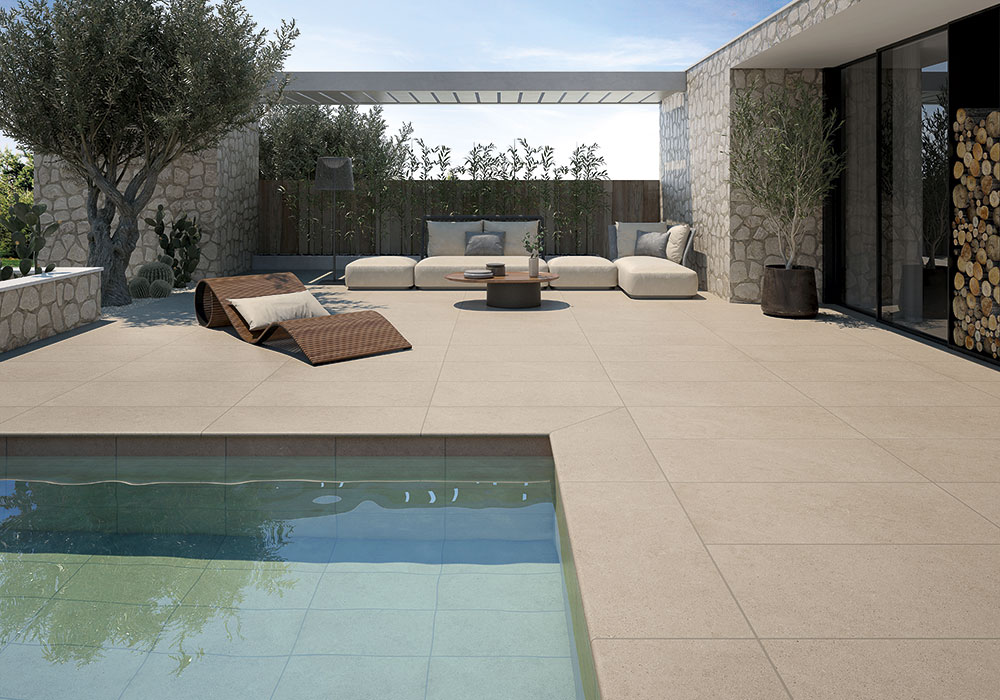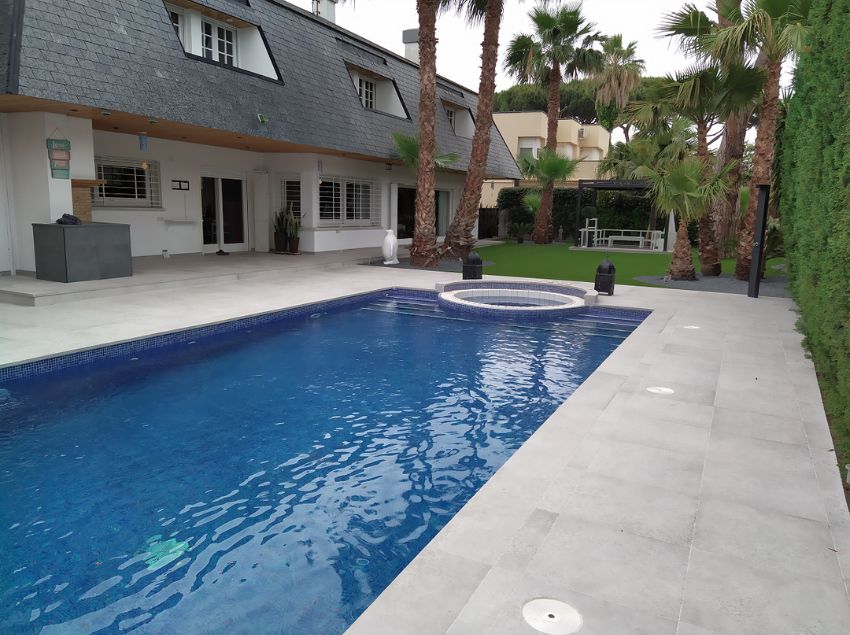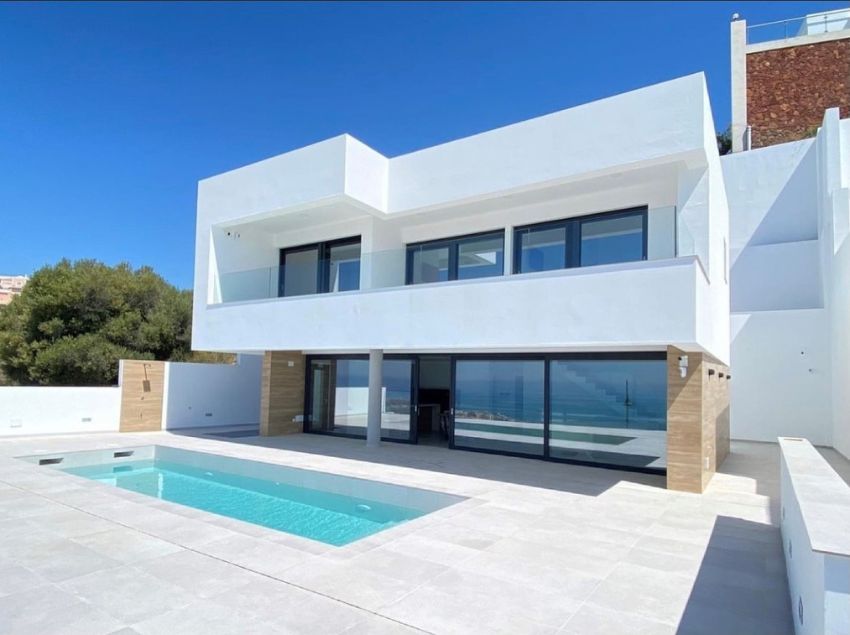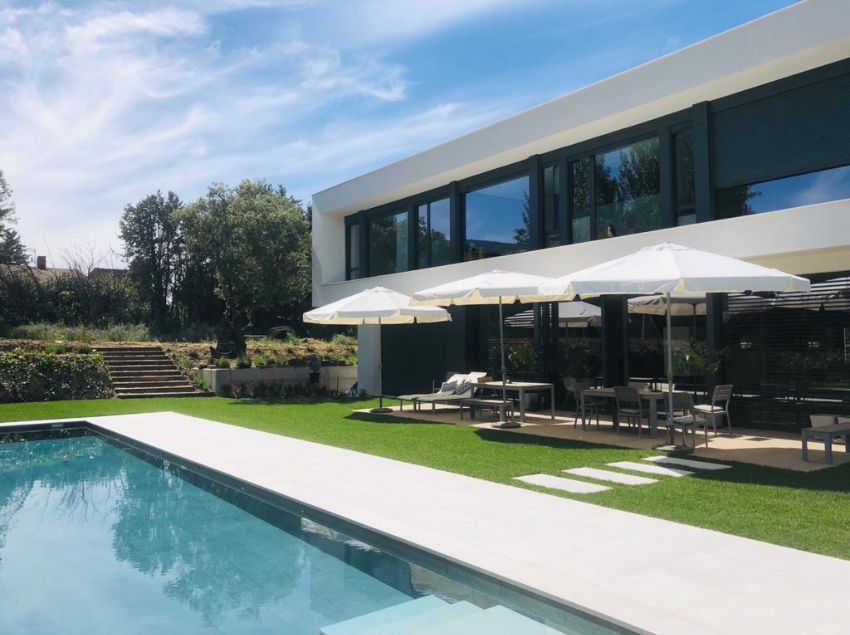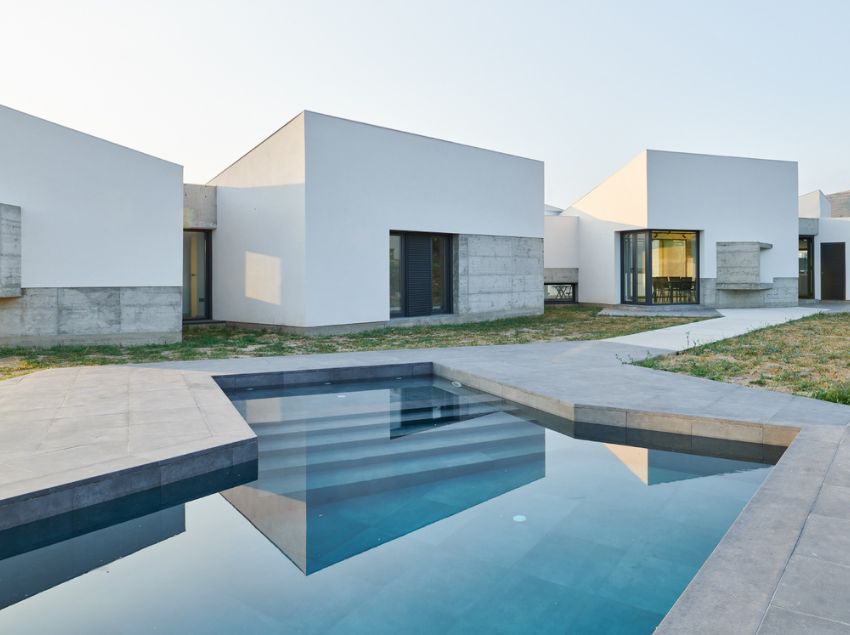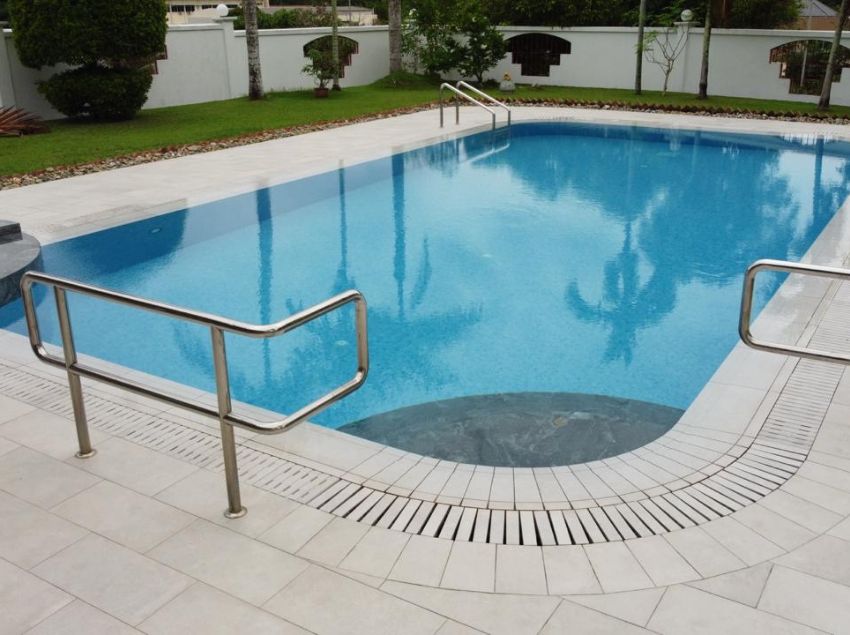Baldosas atérmicas: lo último en suelos que se calientan menos con radiación solar para piscinas, terrazas y solariums
Si vives en una región con temperaturas elevadas y quieres disfrutar de tu terraza o piscina sin preocuparte por el calor del pavimento, las baldosas atérmicas son la mejor solución. Este tipo de baldosa cerámica está diseñada para absorber menos calor que otros materiales, por lo que alcanza temperaturas más bajas cuando recibe la luz solar. Te explicamos sus características, ventajas y por qué deberías elegirlas para tu espacio exterior.
¿Qué son las baldosas atérmicas?
Una baldosa atérmica es aquel revestimiento cerámico porcelánico cuya superficie absorbe o retiene menos cantidad de calor que otras baldosas, en condiciones de exposición directa al sol. Esta propiedad hace que las baldosas atérmicas se calienten menos que otras baldosas, y lo que es más importante, reducen el riesgo de quemaduras al pisar sin calzado sobre ellas. Por esta razón, las baldosas atérmicas son la elección perfecta en las zonas alrededor de las piscinas o para los suelos de espacios exteriores como terrazas, patios y solariums de lugares cálidos y expuestos al sol.
Características técnicas de las baldosas porcelánicas atérmicas
Para entender por qué estas baldosas son más idóneas en climas cálidos, es importante conocer sus características técnicas:
- Menor absorción de calor: utilizan materiales y tratamientos especiales que reducen la acumulación de calor en su superficie de la baldosa.
- Colores claros: tienden a ser de tonos suaves, ya que reflejan la luz solar más que los oscuros.
- Textura específica: pueden tener acabados antideslizantes, sobre todo las piezas indicadas para revestir áreas húmedas como piscinas.
- Resistencia a la intemperie: mantienen su propiedad atérmica incluso en condiciones extremas.
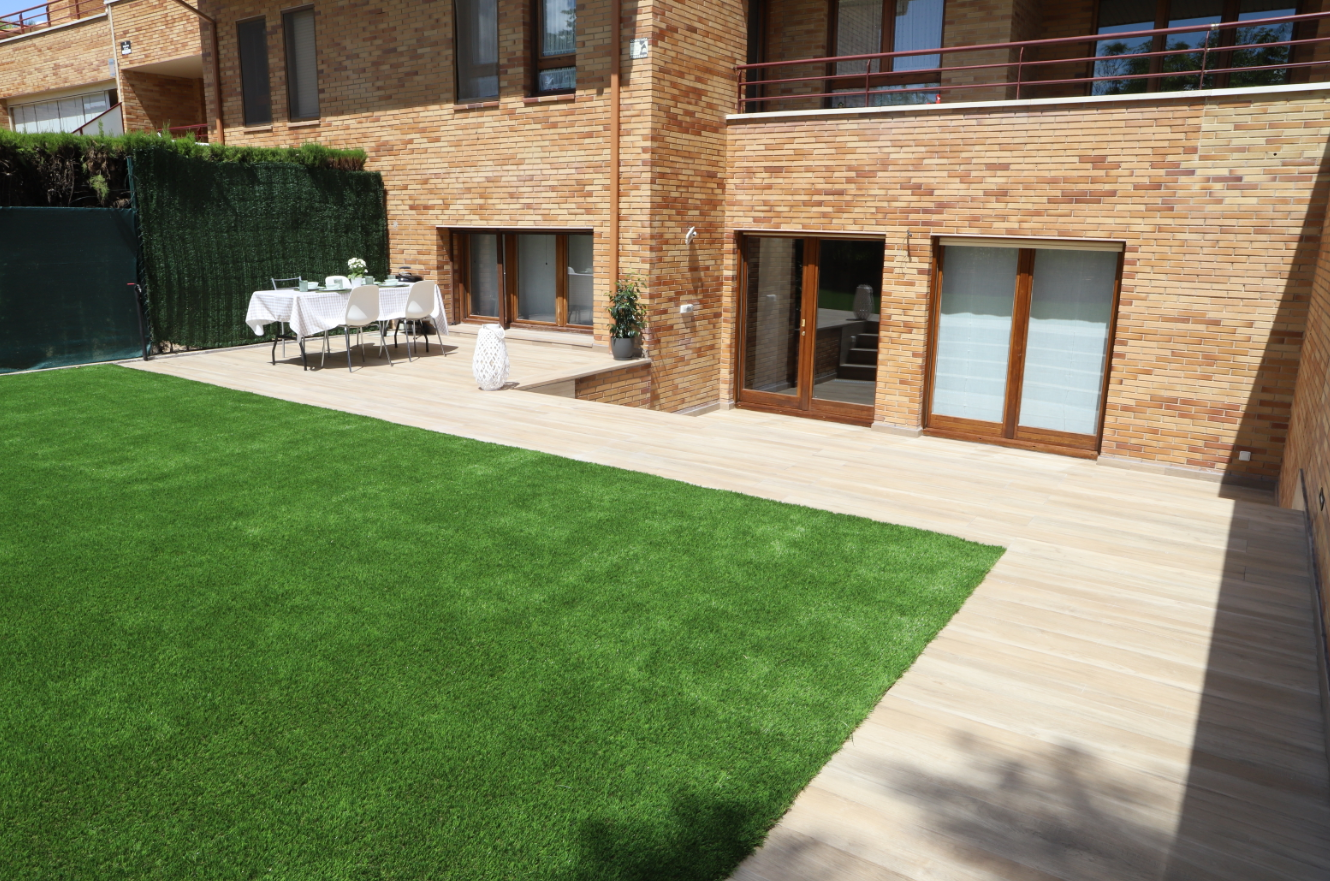
¿Qué ventajas tiene colocar baldosas atérmicas en el suelo de terrazas y alrededor de las piscinas?
Instalar baldosas atérmicas en tu espacio exterior aporta varias ventajas como:
- Más confort: bienestar en el exterior
El principal beneficio de estas baldosas es la reducción de la temperatura superficial respecto a otras baldosas, facilitando la sensación al caminar descalzo.
- Más seguridad: disminuyendo el riesgo de quemaduras en los pies
La seguridad aumenta y el riesgo de lesiones y molestias se reduce.
- Más tiempo de disfrute: las horas de ocio se alargan
¿En qué espacios se pueden poner las baldosas atérmicas?
Las baldosas atérmicas son la opción ideal para los suelos de espacios exteriores expuestos al sol y como pavimento de zonas al aire libre en climas muy cálidos. Las ubicaciones más frecuentes para colocarlas son:
- Terrazas y patios: al calentarse menos las baldosas atérmicas se prolongan las horas de diversión y se alargan las horas de juego y ocio.
- Piscinas: revestimientos alrededor del vaso de la piscina y en el borde facilitan una pisada con menos calor.
- Solariums: permiten relajarse y tomar el sol
- Jardines y senderos: además de calentarse menos, las baldosas atérmicas aportan diseño, estilo y estética en el exterior.
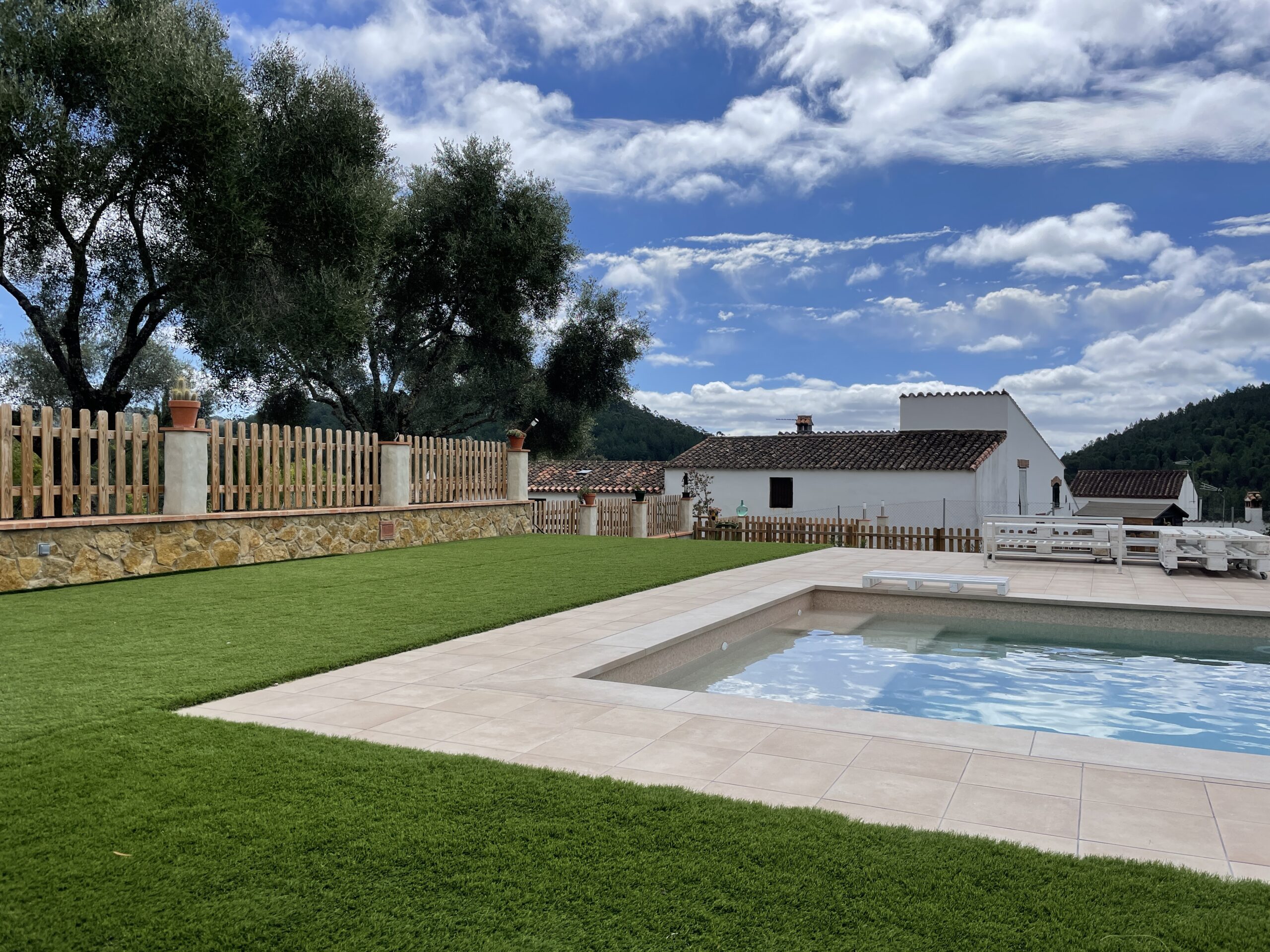
¿Qué es el índice de reflectancia solar o IRS?
El índice de reflectancia solar de un material indica qué fracción de radiación solar incidente es reflejada por la superficie evaluada, y por lo tanto no es absorbida. Normalmente se expresa con un valor entre 0 y 1.
- Un valor de 1 indica que la superficie no refleja ninguna radiación solar, es decir, toda la radiación solar es absorbida y por tanto se calienta, correspondería a colores blancos.
- Un valor de 0 señala que la superficie refleja toda la radiación solar que incide sobre ella y se mantiene con una temperatura menor, correspondería a colores negros.
¿Cómo influye el índice de reflectancia solar en la experiencia térmica?
Conociendo este índice se puede anticipar cuál será la experiencia térmica que brinda un determinado pavimento cerámico: cuanto mayor sea el IRS, menor será la temperatura que alcanza la baldosa bajo el sol.
¿Qué IRS debe tener una baldosa para considerarse atérmica?
Para que una baldosa pueda considerarse como atérmica debe tener un índice de referencia mayor o igual a 0,5. El IRS se mide y se clasifica según el estándar ASTM E1980-11 (2019).
En algunos contextos, también se puede expresar este dato con un porcentaje: un valor entre 0% y 100%, donde 0% representa que no hay reflexión y 100% representa reflexión total, es decir, baldosas que no absorben el calor.
¿Cómo deben ser las baldosas para zonas al aire libre en regiones muy cálidas?
Las baldosas para los suelos de patios de las viviendas unifamiliares de regiones muy cálidas, las piscinas comunitarias en edificios residenciales o las terrazas en las casas de vacaciones debería ser:
- Cerámicas: La pasta de cerámica generalmente presenta una capacidad de absorción de radiación solar más baja que la de otros materiales. Sin embargo, el comportamiento exacto de la cerámica frente al calor depende tanto de su composición concreta, como del acabado superficial del pavimento.
- En tonos claros: En general, las baldosas en colores oscuros tienden a absorber más radiación solar que las de colores suaves. Esto se debe a que las primeras tienen una mayor capacidad de absorción de la luz, mientras que las claras tienden a reflejarla más.
- Atérmicas: con un IRS mayor o igual a 0,50. En zonas cálidas con gran exposición al sol se debería elegir colores claros reflejantes con un IRS > 0.65.
- Antideslizantes para añadir esa funcionalidad a las zonas alrededor de la piscina y evitar resbalones.
En cualquier caso, hay que tener en cuenta que por muy blanca que sea una baldosa cerámica, si está expuesta a mucha radiación solar también se calienta, aunque en menor medida que un pavimento en tonos oscuros. Incluso es posible que llegue a quemar si la incidencia de radiación solar es elevada.
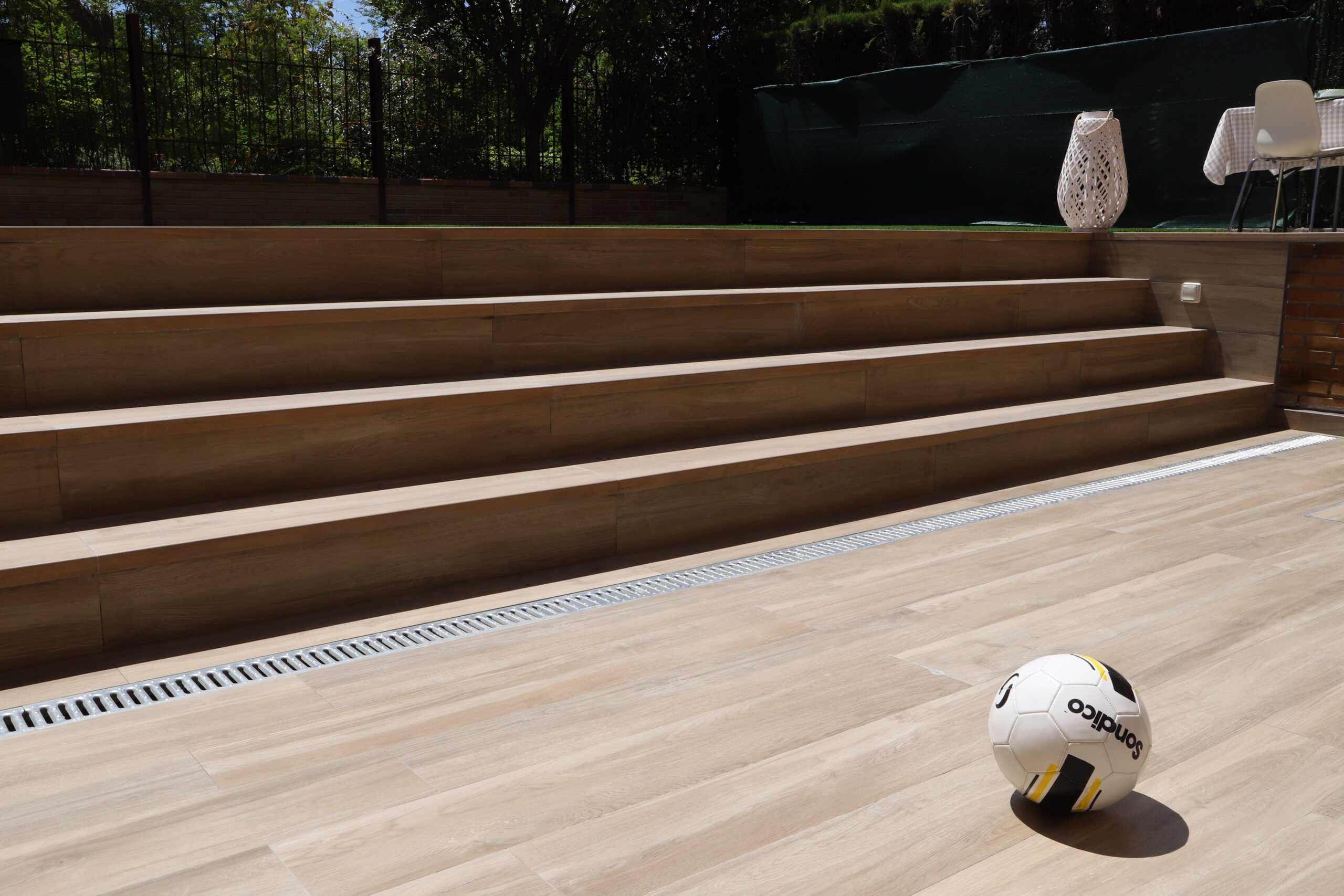
¿Quieres disfrutar de un suelo menos caliente y más seguro este verano?
Si estás pensando en renovar tu espacio exterior y buscas una solución que combine confort, seguridad y diseño, las baldosas atérmicas son la elección perfecta. En Gres Aragón contamos con una amplia experiencia en pavimentos cerámicos para climas cálidos y podemos ayudarte a encontrar la opción ideal para tu proyecto al aire libre. Consulta con nuestros expertos y da el paso para disfrutar este verano de un exterior más cómodo, seguro y elegante.

